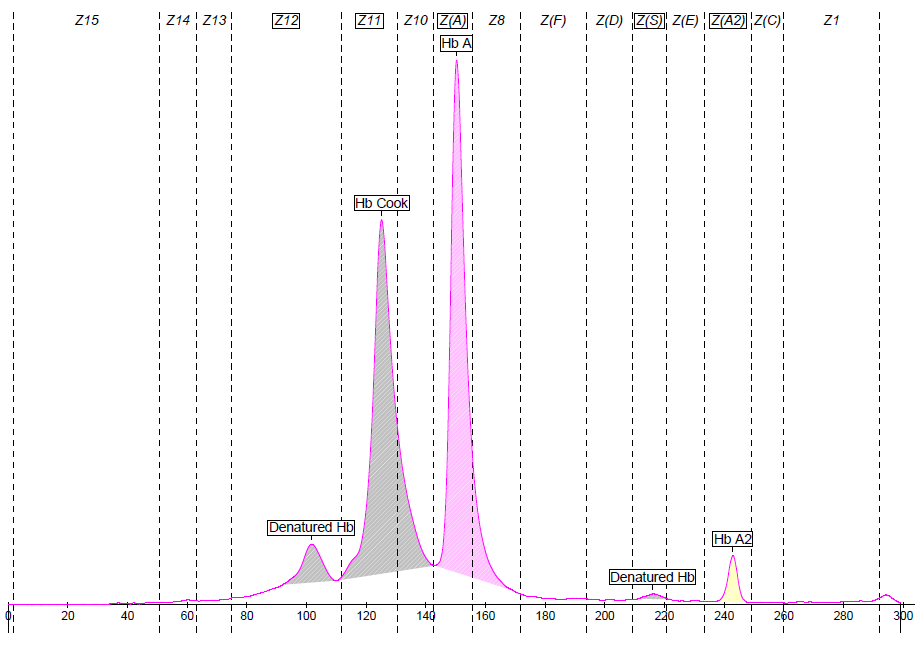General information
Globin chain involved
Status
Heterozygous
Migration zones
Migration positions
125
Sickle Cell Disease: No
Thalassemic variant: No
Capillary Electrophoresis
Fractions
Value %
Denatured Hb
4.0
Hb Cook
46.3
Hb A
46.7
Denatured Hb
0.4
Hb A2
2.6
Comments
The analysed sample was partially degraded.
Mutation data
Heterozygous Hb Cook
Mutation
HGVS Nomenclature
Beta 132(H10) Lys>Thr
HBB:c.398A>C
Hematological parameters
Name
Result
RBC Count
No information
Total Hemoglobin
No information
MCV
No information
MCH
No information
Blood smear
No information
Other analysis
No information
Comments on hematology
Mild hemolysis
Clinical context
Clinical presentation
Normal
Clinical risk
Could generate relevant hemolysis in combination with Beta-thalassemia
Variant information
Stability
Unstable
Oxygen affinity
No data
Ethnicities in literature
Found in Southeast Asian populations: first met in a Thai child with a combination with Hb E, then in several Thai
Comments on variant information
Scientific Literature
Scientific references
- https://pubmed.ncbi.nlm.nih.gov/8936463/ Hutt PJ. et al., Hemoglobin. 1996 Nov;20(4):371-6.
- https://pmc.ncbi.nlm.nih.gov/articles/PMC4171515/ Srivorakun H. et al., PLoS One. 2014 Sep 22;9(9):e108365.
- https://pubmed.ncbi.nlm.nih.gov/29365076/ Riou J. et al., Am J Clin Pathol. 2018 Jan 29;149(2):172-180.
Globin Chain involved
Status
The term "Double Heterozygous" refers to cases of heterozygosity on different globin chain types, while the term "Compound Heterozygous" refers to cases of heterozygosity on the same globin chain type.
For example, S/G-Pest is a Double Heterozygous case (beta and alpha-globin chains are mutated) and S/C is a Compound Heterozygous case (only beta-globin chains are mutated).
Migration zones
Migration positions
Sickle Cell Disease
Thalassemic variant
Capillary Electrophoresis
Variant information
Ethnicities are provided for informational purposes only and are based on scientific literature and conference posters.
A hemoglobin variant may therefore be present in populations of ethnic origins or countries not listed here.

